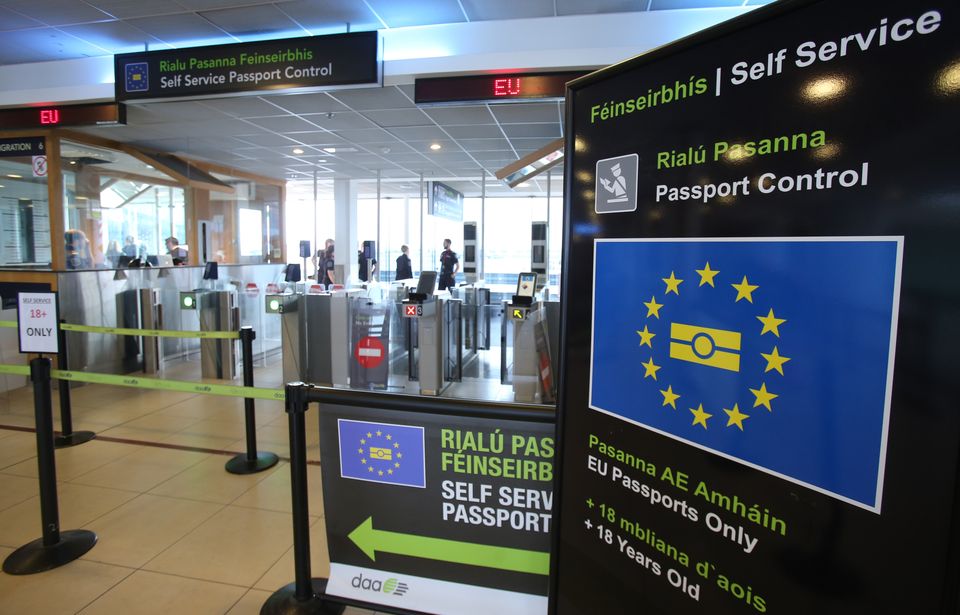LONDON (Reuters) - Britain's Labour Party is set to sweep to power with a record number of seats at Thursday's national election, a forecast by polling company Survation showed on Tuesday.
Survation's central scenario showed Keir Starmer's Labour winning 484 of the 650 seats in parliament, far more than the 418 won by the party's former leader Tony Blair in his famous 1997 landslide win and the most in its history.
The Conservatives, who have been in power for the last 14 years, were predicted to win just 64 seats, which would be the fewest since the party was founded in 1834.
The right-wing Reform UK party were projected to win seven seats.
The Survation analysis used the Multilevel Regression and Post-stratification (MRP) technique that estimates public opinion at a local level from large national samples. Pollsters describe it as a model that uses polling data, rather than a poll itself.
Other MRP analyses have shown smaller margins of victory for Labour, but none have shown a different overall outcome.
Earlier, a regular poll by Redfield and Wilton Strategies which measured vote share nationwide showed a slight narrowing in Labour's lead, but still put the party on course for a comfortable victory.
(Reporting by William James; Editing by Jan Harvey)
Survation MRP: Labour 99% Certain To Win More Seats Than in 1997
With two days until polls open, Survation predict that Labour will win the 2024 general election with 484 out of a total 650 seats. The Conservatives and Liberal Democrats are in a close race to form the official opposition.
These predictions come from a multilevel regression and post-stratification (MRP) model which uses data from over 30,000 respondents to make seat-level forecasts. The model’s implied vote share indicates that Labour will win around 42% of the vote, just under twenty percentage points ahead of the Conservative party on 23%.
Our method uses probabilities to estimate each party’s chances of winning individual seats, then combines these estimates to project the overall election outcome. For instance, if a party has a 50% chance of winning in four different seats, we would assign them an expected total of two seats.

The scale of the Labour victory forecast by our model is unprecedented. Labour is virtually certain (probability greater than 99%) to win more than they won in 1997 under Tony Blair, when Labour won 418 seats by polling 13 percentage points ahead of the Conservatives.
Labour is also likely (probability of around 78%) to win more seats than Stanley Baldwin’s Conservatives did in 1931, when they won 470 of 615 seats.
The Conservative party is virtually certain to win a lower share of the vote than at any past general election, and to poll lower than they have done in any nation-wide election save their disastrous performance in the 2019 European Parliament election when they polled 8%.
The Conservatives are slightly more likely than not (probability: 53%) to win more seats than the Liberal Democrats and become the official opposition, but despite this Sir Ed Davey stands a reasonable chance of becoming the first Liberal or Liberal Democrat Leader of the Opposition since Sir Henry Campbell-Bannerman (1900 – 1905).
Labour is set to displace the SNP as the largest party in Scotland. Our probabilistic seat count suggests Labour will win 38 of Scotland’s 57 seats, the SNP 10, Liberal Democrats 5, and Conservatives 4.
Finally, the Reform Party is likely to become the third most-voted party whilst only winning a handful of seats, with major implications for the proportionality of the electoral system, which we explore below in more detail.
Seat Changes
Our model estimates that both Labour and the Liberal Democrats will make significant gains directly from the Conservatives. Our central estimate for seats changing hands from the Conservatives to Labour is 248 - over four times the number of seats (54) that the Conservatives won from Labour in the 2019 General Election. The Liberal Democrats are likely to gain most of their seats (50) from the Conservatives, and 3 from the SNP, while Labour is likely to become the largest party in Scotland by taking 37 seats from the Scottish National Party.
The Conservatives have been under pressure from both the Liberal Democrats and Labour in their heartlands in the South and East of England. We are projecting many of these ‘Blue Wall’ seats - defined as constituencies the Conservatives currently hold where a majority are estimated to have voted to Remain in 2016 and the proportion of graduates is above the national average - to change hands on Thursday. Of these 52 seats, our estimates suggest the Conservatives will hold just 10.
The Liberal Democrats will gain 23 and Labour 19. Many of these seats have large Conservative majorities, but the Conservatives’ vote share is down by an average of 22% across these constituencies. Included in the Conservative losses would be Chancellor of the Exchequer Jeremy Hunt’s seat (Godalming and Ash) and Theresa May’s former seat (Maidenhead), both falling to the Liberal Democrats.
Seats MRP Predicts Poorly
MRP is able to produce seat level predictions by using information about the demographic breakdown of the seat together with characteristics of the local area. Sometimes, however, those predictor variables can be unusual, and lead us to make predictions in which we have low confidence.
Specifically, we have low confidence in our estimates for Beaconsfield, Exmouth and Exeter East, and South West Hertfordshire. These are all seats where there was a strong independent challenge in 2019, and where there is no continuing independent challenger. The model, seeing low shares for the main parties, and seeing that higher shares "last time" generally lead to strong performance "this time", overconfidently predicts a strong performance by others or by Reform.
Similar reasoning applies to seats which changed hands in by-elections, where past electoral history may be a poor guide to presenting voting intention just because voters changed tack mid-parliament, such as North Shropshire. In cases like Tiverton and Honiton, however, we have been able to conduct additional fieldwork in order to get a better estimate.
Implications for Disproportionality
This election is almost certain to be the most disproportional election in the postwar period.
There are various ways of measuring disproportionality between vote and seat shares. Here we use the most commonly used measure, the Gallagher index. This index is a number between zero and one (sometimes between zero and one hundred). A value of zero is a perfectly proportional outcome. A value of one happens where one party wins all of the seats without winning any of the votes.

Figure 1 shows historical values of the Gallagher index for elections in Great Britain. In calculating the Gallagher index we’ve included information on the Conservative, Labour, Liberal Democrat, Green, SNP, Plaid, and UKIP/Brexit Party/Reform vote and seat shares; all other parties are grouped under “others”.
The most proportional elections were the elections of the nineteen fifties; the most disproportional election, the election of 1983, when the SDP won under four percent of seats on 25% of the vote.

Figure 2 expands that chart to show a range of possible outcomes for the 2024 election. Our best guess as to the value of the Gallagher index in 2024 is 0.28 units; we’re 90% sure it will fall between 0.25 and 0.3 units.
Values of the Gallagher index greater than 25 units are exceptionally rare, and generally only occur in small island nations with a small number of seats, where it becomes possible to “run the table” and win almost all of the seats. If our MRP model is even close to being accurate, Britain is about to become a world leader in electoral disproportionality.
Technical Notes
These estimates are based on a model of voting behaviour where there are nine possible outcomes: eight parties (including all others) and a "not voting" category. All outcomes are included in a single model, and so "not voting" is modelled in just the same way as "voting Labour" or "voting Conservative". This makes the model a multilevel multinomial model. The model is estimated using the Stan probabilistic programming language.
The model includes as individual-level predictors the respondent's age group, their highest level of qualifications, their gender, and their 2019 vote. Also included are interactions between age group and qualifications, and between age group and past vote.
The model includes as area-level predictors the vote shares won by parties in the 2019 election; the presence of candidates from each party in that area; the number of councillors from that party in that area; and several other variables derived from the Census or other administrative data sources, including the proportion of the 16+ population that is economically active, the proportion that is nonwhite, gross weekly income, the proportion of homeowners, the proportion over 65, and the proportion in bad health.
The model also includes some predictors which are used to model responses, but which are not used in post-stratification. These include date of fieldwork, and the survey mode.
Predictions from the model are post-stratified using a post-stratification frame which is built on the most recent census data (2021 for England and Wales, 2011 for Scotland). Past vote was imputed and then adjusted to match notional 2019 results for each constituency. We applied mortality adjustments to the post-stratification frame to account for differential mortality between supporters of different parties who vary in their average age.
The model was estimated on data running up to the 1st July. Almost all of the data was collected in June, with a small number of older constituency polls left in to improve coverage. In total we used responses from 34,558 individuals.wh
Estimates from the model are draws from a posterior distribution, or a set of 100 simulated outcomes. If we say an outcome has a five percent probability of happening, then it happened in five out of our hundred simulations. We treat outcomes that never happened in our simulations as having a probability of less than one percent.
FAQs
Why are the vote shares from your MRP model different to the vote shares from your traditional polling?
The results from the MRP model can differ from the results of traditional polling for several different reasons.
First, the MRP model uses more data spanning a longer period. Although we model changes in parties' baseline levels of support over time, modelling changes of support over time is not guaranteed to give the same results as just analysing data from the most recent period.
Second, the traditional polling is based on a turnout filter, and vote shares are based on those who pass that turnout filter. Although we use that turnout filter as part of the MRP model (i.e., we treat those who do not pass the turnout filter as "will not vote", and model that response), the fact that we are modelling the choice to turn out and vote, and the fact that our modelling is never perfect, means that we end up making vote choice predictions for some types of voter who likely would not pass our turnout filter if we called them or asked them online.
Third, both the MRP model and traditional polling are subject to uncertainty. In the same way that we would not be surprised if the actual vote shares are one or two percentage points different to what we predict here, we should not be surprised if two attempts to estimate actual vote shares also differ by a similar or larger amount.
Why is the number of seats different from the number of leading parties?
Our headline figures are based on the average number of seats won by each party across all of our simulations. This generally gives a different figure to taking the predicted vote shares for each seat and tallying the party in the lead in each seat. This is because the model is uncertain about vote shares, and that uncertainty means that the leading party in each still can still lose.
A comparison can help. In a horse race, the favourite is always the most likely to win the race (if they were not, they would not be the favourite). But this does not mean that every horse race is won by the favourite. Similarly, the Labour party is the most likely to win in a large number of seats, but they will not win all of the seats in which they are favourite. They will win a large number of seats where they are favourite, and a small number of seats where we predict them in second place with a reasonable chance of winning.
How wrong might you be?
We think that the most likely number of seats won by Labour is 484, but we think that the chances of us getting this exactly right are pretty low. Only in 3 percent of simulations did the Labour seat tally turn out to be exactly 484.
In fact, we can go through each simulation, and work out how “wrong” we’ll be, where by “wrong” we mean how far off the Labour seat tally will be from our central estimate. If we do that, we should expect to be off by on average 14 seats.
In practice we will likely be wrong on the Labour seat tally by a larger number. The figure of 14 assumes that we get the distribution of outcomes exactly right, which is unlikely. We are therefore likely to be off on the Labour seat tally by plus or minus fifteen seats or more.
Get the data
Survation conducted MRP analysis of 34,558 adults aged 18+ in Great Britain on their voting intentions. Fieldwork was primarily conducted between 15th June - 1st July 2024. The full results are available to download here.
________________________________________
If you are interested in commissioning MRP or to learn more about Survation’s research capabilities, please contact John Gibb on 020 3818 9661, email researchteam@survation.com or visit our services page.
For press enquiries, please call 0203 818 9661 or email media@survation.com
Survation. is an MRS company partner, a member of the British Polling Council and abides by their rules. To find out more about Survation’s services, please visit our services page.
You can sign up to our press release list here. Follow Survation on Twitter: @Survation







